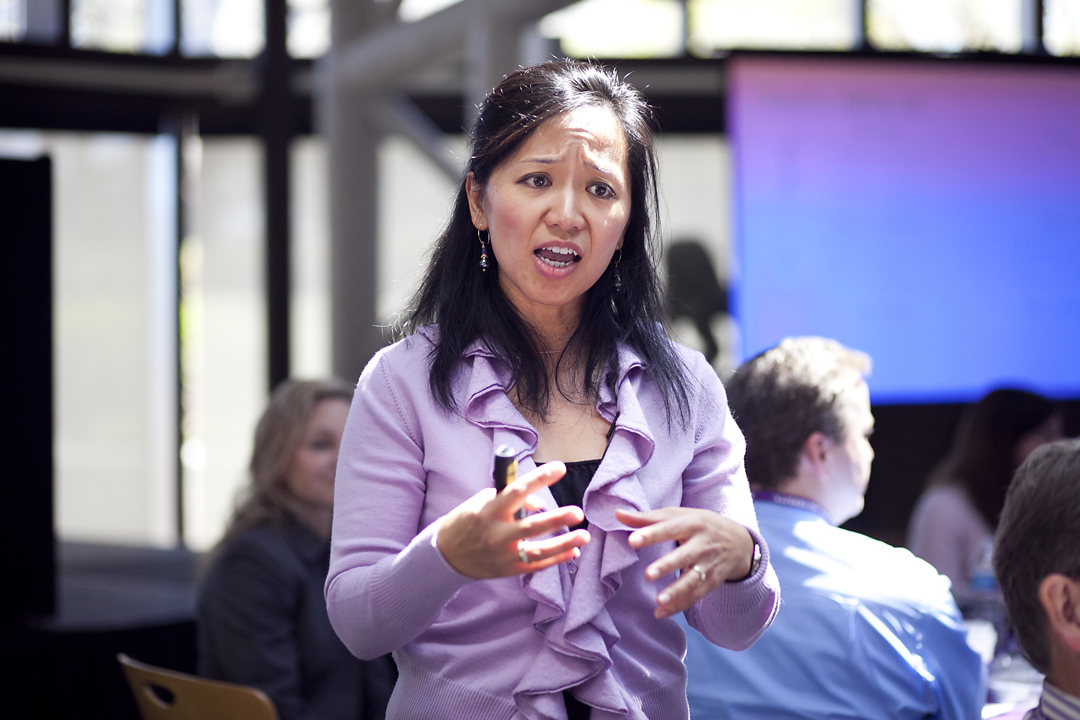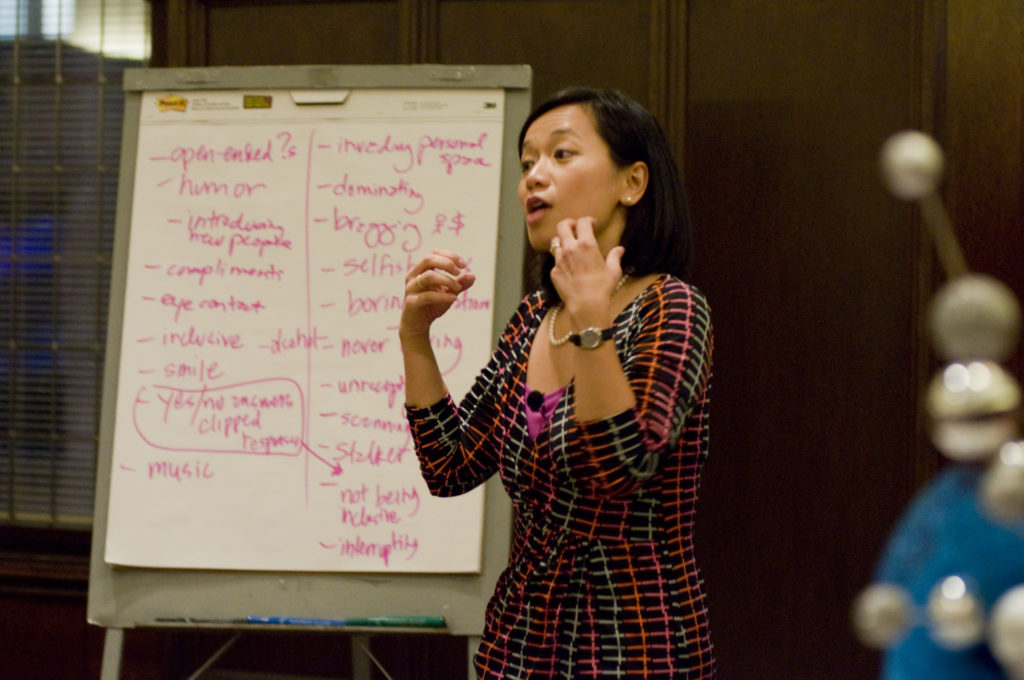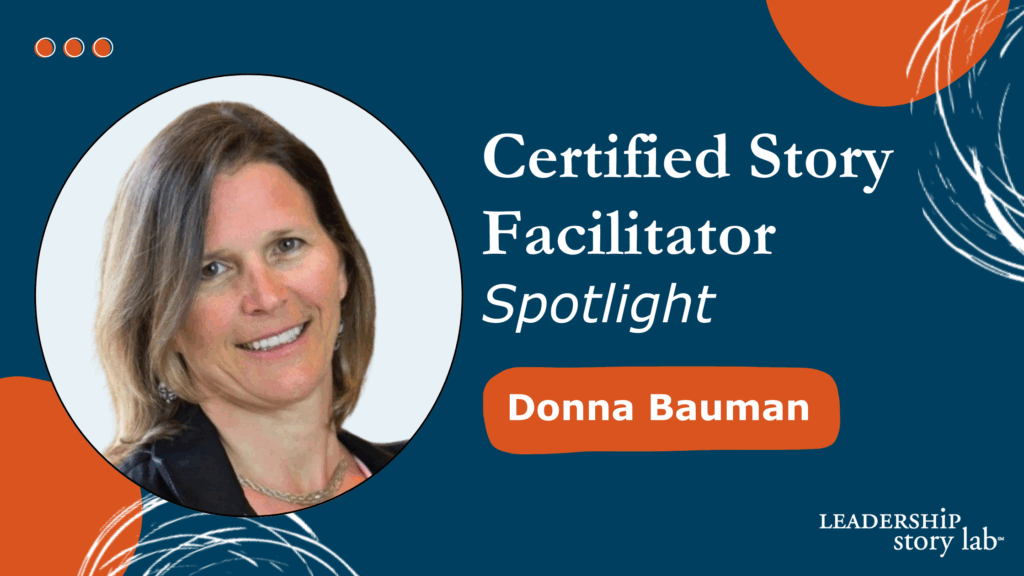October 12, 2016 / Esther Choy
 People are seeking meaningful work and meaningful business relationships, a topic Esther explored in an interview with Leadfully:
People are seeking meaningful work and meaningful business relationships, a topic Esther explored in an interview with Leadfully:
1. Why do you believe authentic communication is an essential leadership skill in the 21st century?
This past Monday (July 19), I was speaking at the Healthcare Analytics Conference in Chicago on leadership and storytelling. Over and over again, people shared this sentiment with me: Technology for healthcare is there, but change is ever more elusive.
In the 21st century, the access and abundance of technology creates an illusion that once we get our hands on the right tools (or toys for some people), we will live happily ever after. Nothing can be further from the truth!
Technology can assist us to a certain extent, but it cannot take over. To create long-lasting change, we need people. And we need people to believe in and work for common goals. Authentic communication is the missing ingredient in the 21st century. More than ever, people are seeking meaningful work and meaningful business relationships. And yet there’s so much noise that makes it hard to hear the meaning.
Information inundates us. We’re swamped with messages everywhere we turn. Leaders, therefore, must bring their team back to what really matters about the work they do.
Stories make people sit up and listen. And stories make people remember. Cognitive psychology tells us that a piece of data is up to twenty times more likely to be remembered if it is anchored in narrative.
So if you want your team to remember why they are doing their work and why it matters, tell them a compelling story. If you want a potential client to partnering with you will be one of their most meaningful business relationships, leave them pondering an authentic story.
2. If you had five minutes with a new leader, what would you advise them with regard to using storytelling as part of their work?
Someone very wise once said, “To become a good storyteller, first become a great story collector.”
Getting others to tell their stories is probably the most under-valued aspect of storytelling. Many of us worry about impressing others. If I only had five minutes with a new leader, I would advise her to not worry about how to impress others. Instead, new leaders should facilitate opportunities where others can tell their stories.
3. What makes communicating authentically hard for the leaders you coach — and what do you encourage them to do to overcome those challenges?
Early in their career, many of my clients have been taught to act a certain way at work. Over time, the idea of bringing a piece of who they are to their workplace becomes an implicit “no no.” So many of us perform for our jobs, and this performing self can be very different from our authentic self.
Another challenge is being inundated with information. Audiences seek leaders who provide clear, concise and emotionally compelling paths through swamps of information. Often, though, we believe that facts speak for themselves. We believe we can persuade teams and audiences simply by dishing out the facts.
What I try to do is to get leaders to acknowledge their audience’s situation. How can they connect the data and information they have with what the audience needs? How can they couch data in a story to help their audience process it? It’s much easier to process data inside a story than outside of one.

As for balancing our authentic self and performing self, this can be daunting. But there are simple solutions that lead to meaningful business relationships. First, create an atmosphere for your teams where their interests and values are respected and wanted. Don’t just talk about it, do it!
Create opportunities for your teams where everyone can express who they are and make sure they feel acknowledged and appreciated even if you don’t agree with them. Change starts with leaders, and small effort can yield big impact when done right.
Second, “be the change you wish to see in the world,” to paraphrase Gandhi. Take the lead to be authentic yourself. Others will follow. Meaningful business relationships will ensue. Leaders set the tone and the bar. Behavioral shift often begins with those with formal power.
Third, let others in on it! For example, when you announce a decision, make sure you also talk about the process of how the decision was made. Discuss the intention behind the decision so that everyone knows not just the outcome but can see how the decision came about.
4. Tell us about a time where you or a client were facing ambiguity in your/their work, and authentic communication helped move the team forward.
My foray into the investment industry six years ago was helping an emerging portfolio manager prepare for his first major presentation to a mainland Chinese Sovereign Wealth Fund. His company was one of eight finalists selected to pitch for a $250M USD investment mandate. The winning firm would be the first western company to have ever been given the position to work with this fund.
He had thirty minutes – including translation – to present. What should he say?
By performance, his company ranked about the middle of the eight finalists. And again, by size and history, his company was in the middle of the pack. By team experience and credentials (you guessed it) his company once again was perceived to be about in the middle of the competition. When I was an admissions officer at the University of Chicago Booth School of Business, we’d call candidates such as this client of mine, “Not-A-Slam-Dunk-Not-A-Throw-Away.”
Knowing what he was up against, we decided that he should not rehash what the judging committee already knew. Nothing about his company history, performance, his team, investment philosophy, or anything that focused on the presenter. Instead, he wove a personal story into his presentation and tied it to what his audiences cared about.
He told a story about his hardworking, single-parent grandmother who lost her small corner store business to big box retailers. He told the committee how she was able to preserve dignity and her humble lifestyle because of a generous pension. My client told the committee what having this safety net had meant to him and his family. He shared how this personal experience affected his investment philosophy, how he led his team and why he chose to work with his firm. And for the finale, he painted a picture of what the future could look like for the millions of retired Chinese grandparents: having a safety net, preserving their lifestyle and dignity. He would personally work to fulfill this goal.
Low and behold, his seemingly middle-of-the-pack company was awarded the investment mandate!
5. Looking back to when you were first getting started as a leader, what do you know now about building belief and inspiring others to act that you wish you knew then?
What I wish I knew back then is making sure everyone’s ideas are heard. Though leaders are the ones with formal roles and accountabilities, the team can make or break the success. So the division of labor should approximately look like this: leaders should make sure everyone is on the same page with the whys (why are we doing this) and the whats (what are the goals or deliverables); the team should figure out the hows (how to make sure that they achieve the goals).
6. What’s your authentic communication superpower?
It’s funny, because we tell our clients that they don’t have to be a superhero to tell good stories. And it’s true!
I do a fair bit of public speaking. Every single time, several hours, days and months leading up to taking the stage, I am scared out of my wits. I question why I accepted the invitation, plot how to get out of the speaking engagement, and imagine the worst possible fall out afterwards.
Luckily, I have never backed out of my commitments.
But what do I do with stage fright? My main strategy is to shift the focus of my anxiety to my audience’s time. I follow my own process of understanding, analyzing and empathizing with those taking the time to listen to me.
To beat stage fright, I follow my own process of understanding, analyzing and empathizing with those taking the time to listen to me.
Think about it. If one person spends an hour listening to me and I am speaking to a room of a hundred people, then collectively this group is giving me one hundred hours of their time. This is big responsibility. I can’t let them down!
The next sets of questions then direct my attention and energy to a single concern: how do I make sure my audience’s time will be well spent?
For more storytelling advice, subscribe to Better Every Story!
Once I re-direct myself mentally and emotionally to my audiences, then I can be in a flow. I do like chatting with people after all. And I am at my best when I can be helpful to others. Public speaking is no different after all. I am merely chatting with a large group people and offering something helpful at the same time.
For me, it is about being self aware, understanding my strengths and weaknesses and knowing how to both leverage and work around them. For me, my audience is my authentic communication superpower.
Related Articles
Break Out Of Unproductive Conversation Patterns
What’s the Story Behind This: Asking for Stories
Better Every Story
Leadership Transformation through Storytelling
"This is an amazing and insightful post! I hadn’t thought of that so you broadened my perspective. I always appreciate your insight!" - Dan B.
Get Esther Choy’s insights, best practices and examples of great storytelling to your inbox each month.


